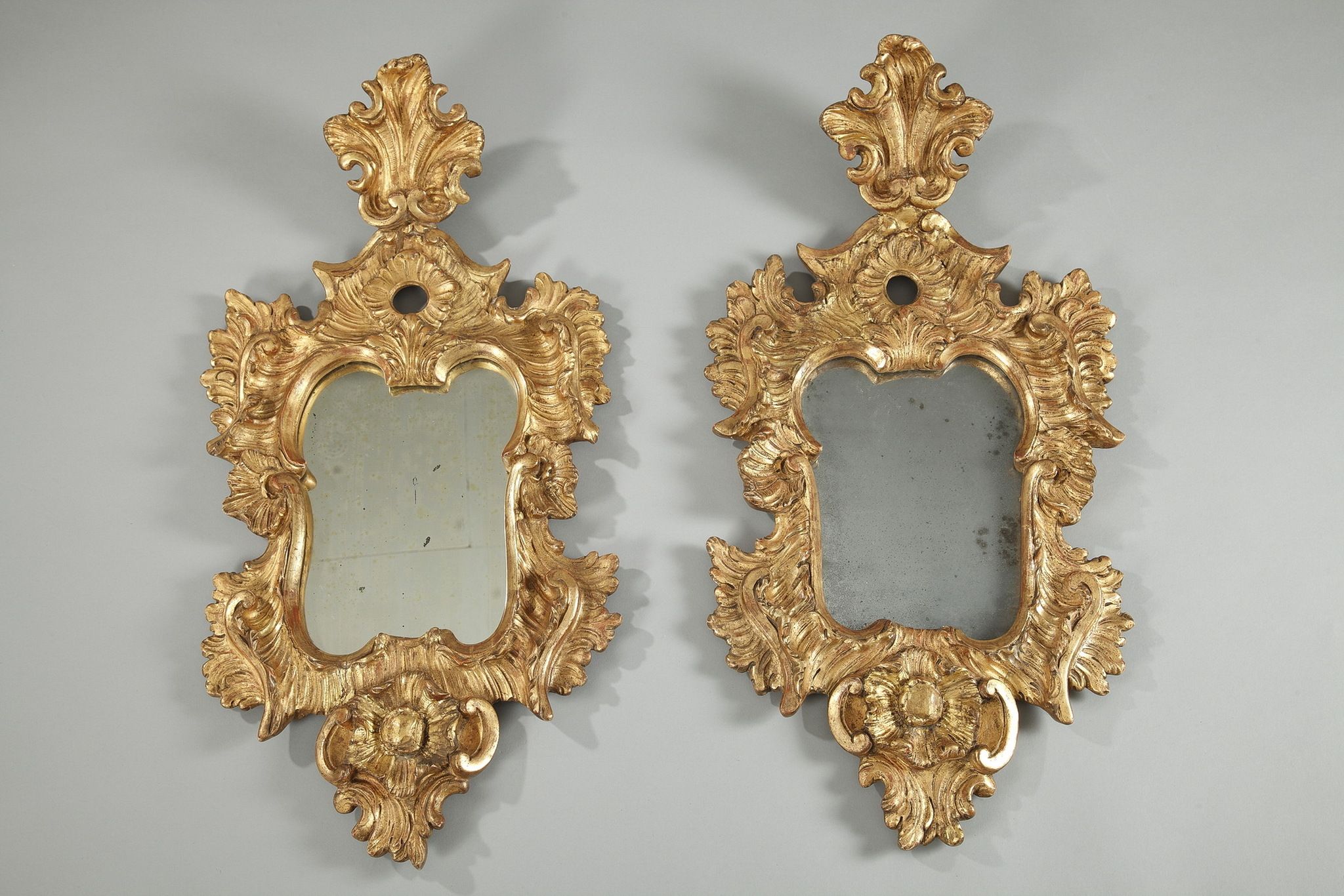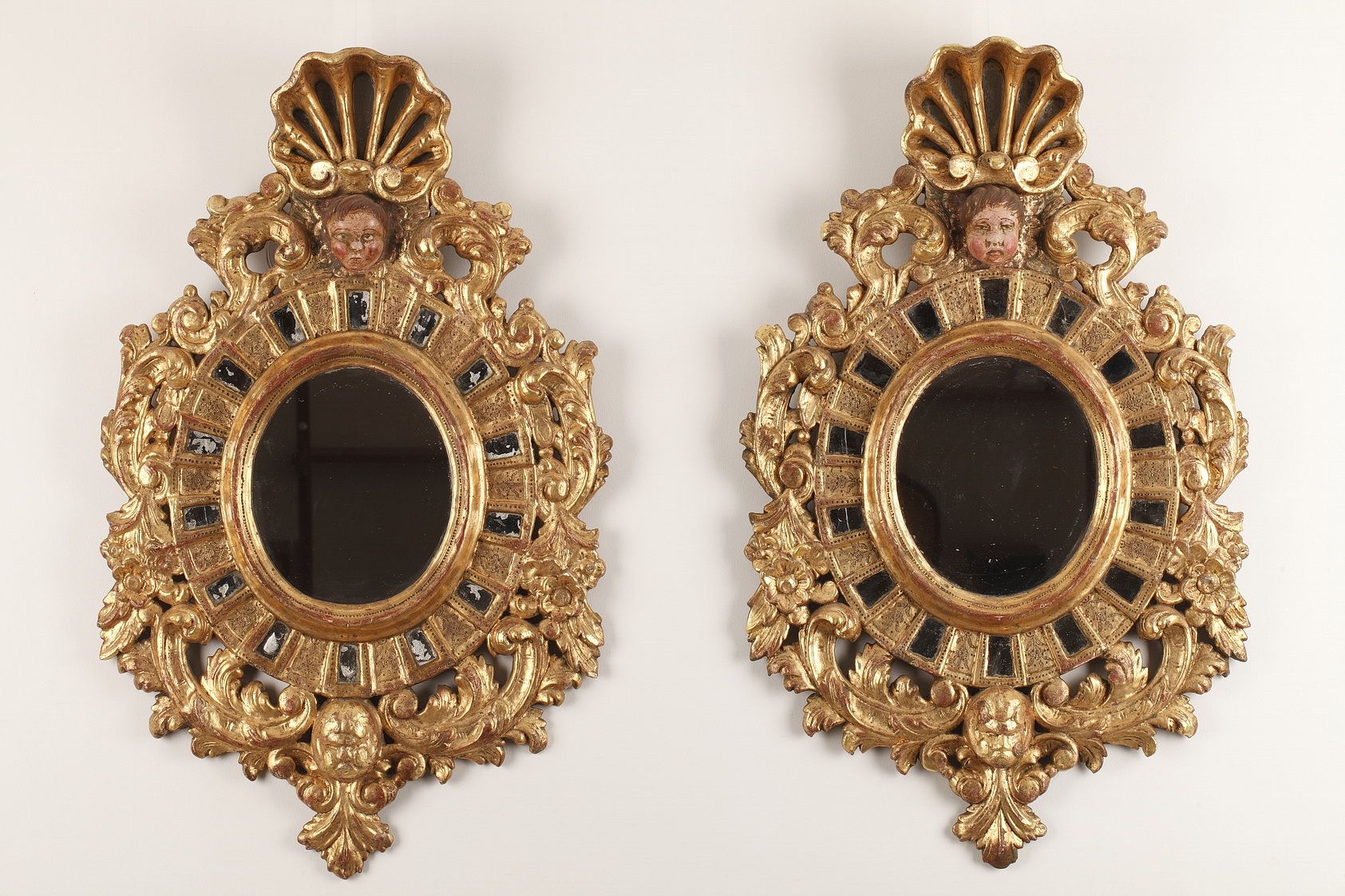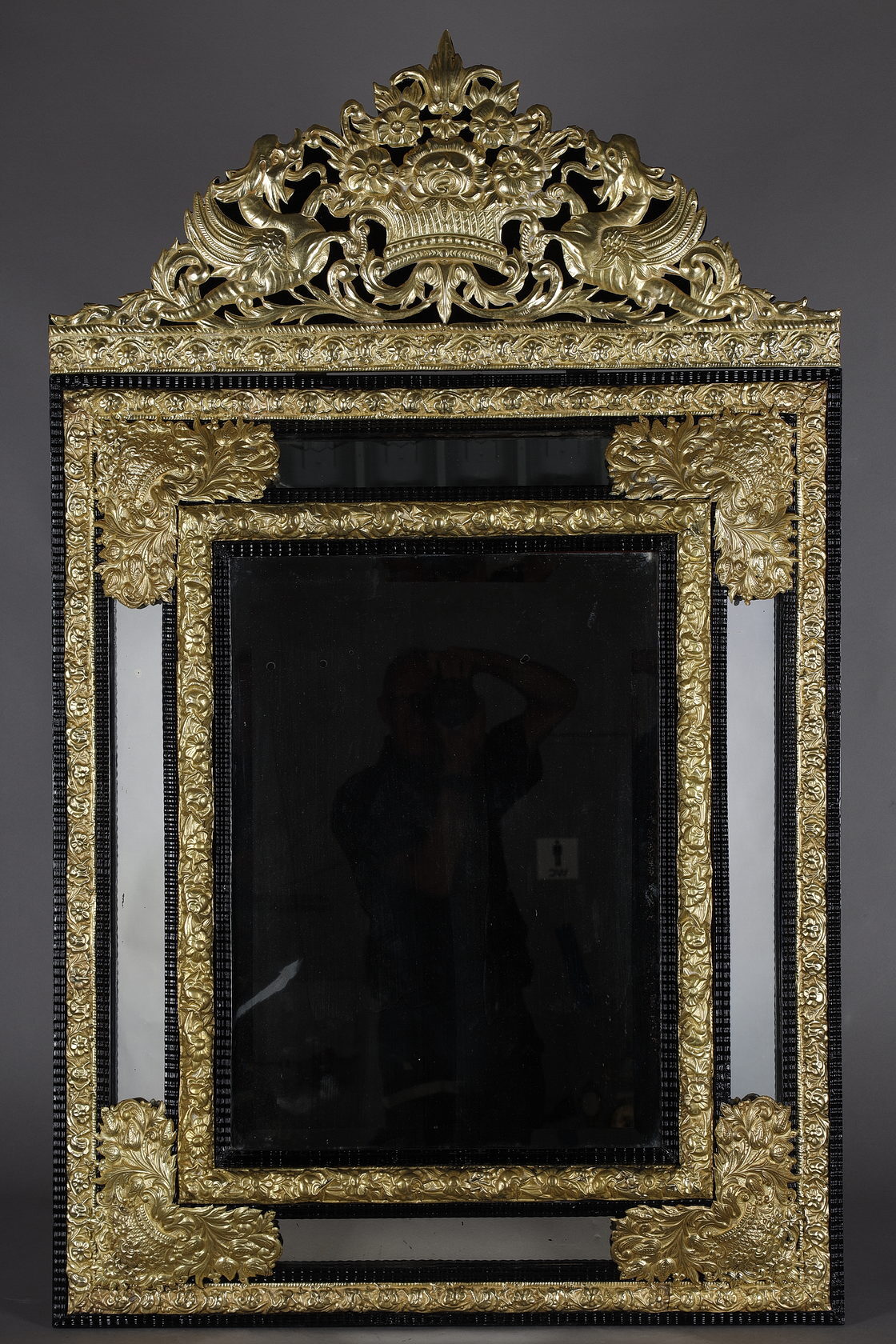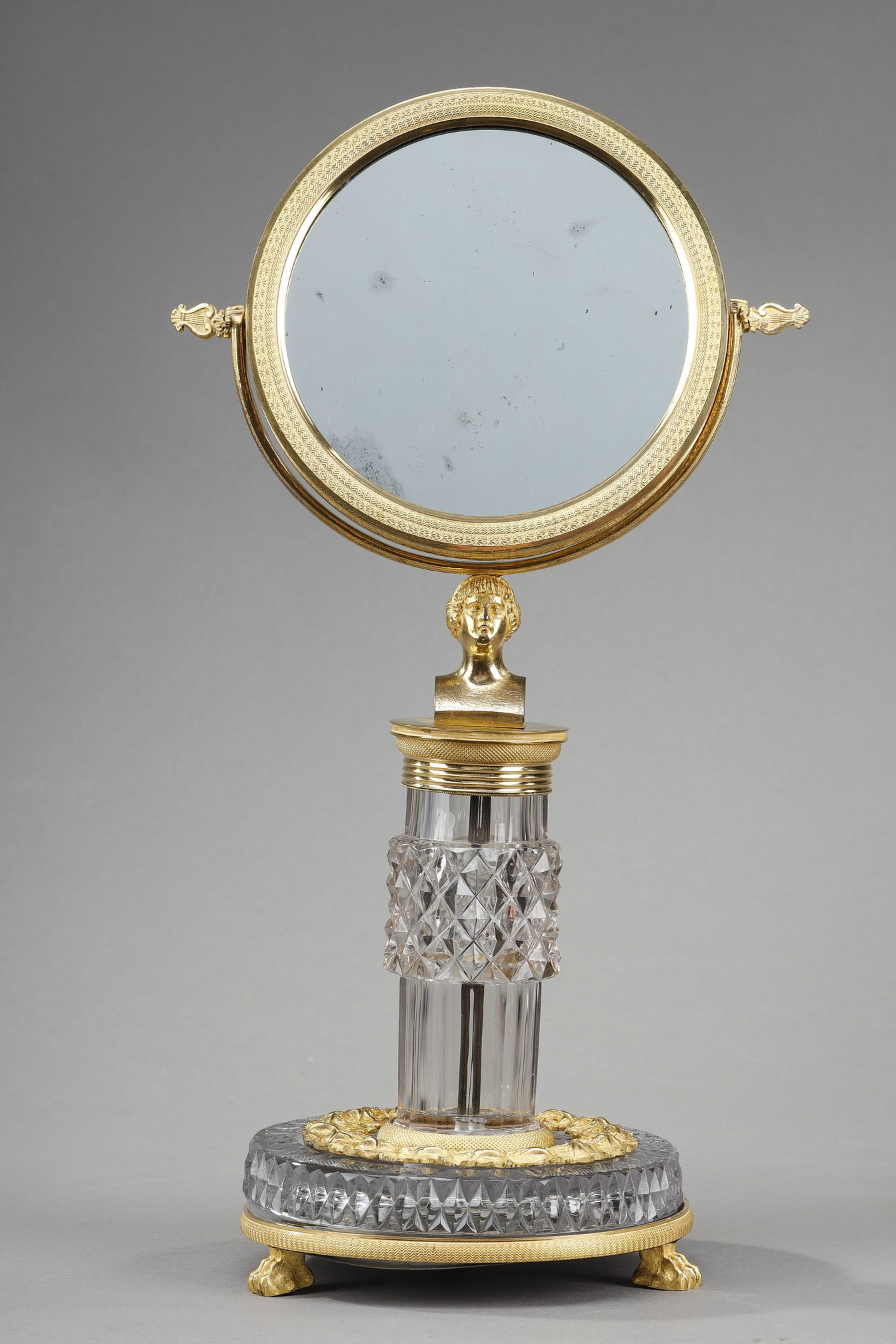The mirror, an emblematic decorating object
17.06.20
The earliest manufactured mirrors date back to 6000 BC. The earliest examples are in polished stone, then in polished metal, copper or bronze. Ancient mirrors were made from metal plates polished to a shiny finish. The backs and handles of some hand mirrors were decorated with scenes from women's daily lives, or figures of goddesses. From the first century onwards, pewter, bronze, silver and gold were lined with glass.
In 13th- and 14th-century Europe, mirrors were lined with lead and then with an amalgam of tin. The most famous Renaissance models are undoubtedly the Venetian tin-plated mirrors of the 15th century. These small mirrors were highly reflective. Later, in the mid-17th century, very tall mirrors were produced for placement on marble-topped consoles or, towards the end of the 17th century and throughout the 18th century, above mantelpieces.
Pair of Venetian-style giltwood mirrors, 17th century
The technique of cast glass enabled the creation of large-scale mirrors. Their use was twofold: to richly decorate a room and to multiply light sources through reflection. In the 18th and 19th centuries, mirrors were a central element in the decoration of aristocratic and bourgeois interiors. Subsequently, mirror frames - often in carved and gilded wood, became a lucrative industry, some being stamped by woodcarving specialists.
The Mirror in the 17th and 18th centuries
The discovery of Mirror in glass was a real revolution. Venice was famous in the 16th, 17th and 18th centuries for its glassworks using this new technique. The master glassmakers of Murano carefully guarded the secret of its manufacture. As a result, Italy kept the exclusivity of the production until the 17th century and exported its creations to the rest of Europe.

The first Venetian mirrors had simple wooden frames. Gradually, they adapted to the Renaissance and Baroque spirit, and displayed sumptuous decoration with colonnettes, pediments, pearls and mythological figures.
The carved and gilded wooden frames are richly decorated with foliage and polychrome elements. Gilded bronze elements and precious stones are sometimes combined with the wood. In the 18th century, the Rococo style with its tisted and asymmetrical forms became very popular. During the 18th century, manufactures appeared in other European countries, but Venetian mirrors continued to be imitated.
The Mirror in the 19th century
The psyche mirror appeared at the very end of the 18th century, under the Consulate (1799-1804). A large pivoting mirror, surrounded by a mahogany frame and supported by two columnar or baluster-shaped uprights, rests on a substantial plinth. Antique motifs, lyres, palmettes, swans and lion's claws in bronze or gilded wood make up the ornamentation. Two light arms are sometimes attached to the side jambs.

This indispensable piece of furniture for the adjustment of a toilet was very fashionable in the early years of the 19th century, under the Empire and the Restoration. Fascinated by fashion and concerned with the quality of her decorations and furnishings, Josephine ordered several psyches for her bedroom and her powder rooms at Tuileries and Malmaison.
In the 19th century, furniture evolved according to the needs of the rising bourgeoisie. Furniture manufacturers supplied models drawn from the repertoire of past centuries. The Restoration saw the emergence of neo-rocaille models, designed by cabinetmaker Aimé Chenacard (1798-1838). But it was above all at the start of the Second Empire that fashion frenziedly seized on the styles of yesteryear.
TheNapoleon III period was characterized by a broad mix of 17th and 18th century styles. Numerous pieces of furniture in Boulle marquetry, Louis XV and Louis XVI salons, and small porcelain objects in the Meissen style were produced. Cabinetmakers such as Louis-Auguste Alfred Beurdeley (1808-1892) and Guillaume Grohé (1808-1885), suppliers to the Emperor and Empress, were famous for their exceptionally fine furniture, inspired by the great 18th-century models. Furnishings diversified and countless objects adorned bourgeois interiors.
Under Napoleon III, the fashion for large mirrors persisted, but they were hung on walls instead. Frame decoration was inspired by motifs borrowed from earlier styles, notably Louis XIV and Louis XV.
The Rocaille style is very popular, and many models feature frames richly decorated with rocaille, ragged foliage and exotic themes, in an asymmetrical spirit. Partitioned mirrors with rich decorations in molded wood and brass are reminiscent of the Louis XIV style.
The "pareclose Mirror" is a mirror with a central part surrounded by a wide frame that also has mirrored parts. The two models we have are sumptuously decorated with large openwork bouquets and foliage pediments.
 Mirror with gilded frame bronze and cloisonné enamel, Napoleon III period
Mirror with gilded frame bronze and cloisonné enamel, Napoleon III period
Smaller models adorn tables and consoles. Craftsmen created cloisonné enamel decorations or depictions of Love and Psyche.




